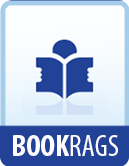Now grown as beautiful as he was good.
The aged Fairy in their presence stands,
Confirms their mutual vows, and joins their hands.
The Prince with rapture hails the happy hour,
That rescued him from self-delusion’s power;
And trains of blessings crown the future life
Of Dorus, and of Claribel, his wife.
NOTES
CHARLES LAMB AND BOOKS FOR CHILDREN
Charles Lamb’s activities as a writer for children seem to have begun and ended in the service of Godwin. The earliest effort in this direction of which we have any knowledge is The King and Queen of Hearts, 1805, and the latest Prince Dorus, 1810 or 1811, unless we count Beauty and the Beast, possibly 1811, which in my opinion he did not write.
Lamb first met William Godwin (1756-1836), the philosopher, probably through the instrumentality of their mutual friend Thomas Holcroft, not long after Gillray had satirised Lamb and Lloyd, in his plate in the first number of The Anti-Jacobin Review and Magazine, August, 1798, as a frog and a toad, seated in the vicinity of Coleridge and Southey and reading together a volume labelled “Blank Verse, by Toad and Frog.” “Pray, Mr. Lamb,” said Godwin when he first made Lamb’s acquaintance, “are you toad or frog?” It was feared that trouble might ensue, but Lamb and Godwin were found the next morning at breakfast together and they became good, though never very intimate, friends.
Godwin, who had been for a while a minister at Ware, in Hertfordshire, came to London in 1779, and took up literature as a profession seriously in 1783. His Political Justice was published in 1793, Caleb Williams in 1794, and St. Leon in 1799. After loving at a distance Mrs. Opie and Mrs. Inchbald, Godwin married Mary Wollstonecraft in 1797. Their daughter afterwards became Mrs. Shelley, the wife of the poet. Mary Wollstonecraft Godwin died in the year of her marriage, and in 1801 Godwin married again, a Mrs. Clairmont, a widow. Lamb detested her. None the less it was she who took to publishing and who incited him and his sister to write the charming children’s books in this volume.
Lamb helped Godwin with other literary ventures before the publishing business was started. In 1800 he wrote an epilogue to his tragedy of “Antonio” (see the essay in Vol. II., “The Old Actors,” for a description of the luckless first night), and he advised him in the composition of “Faulkener,” another tragedy, which failed in 1807 and which also had a prologue by Lamb. And a letter is extant showing Lamb toiling at a review of Godwin’s Chaucer in 1803, but the review itself is not forthcoming.




